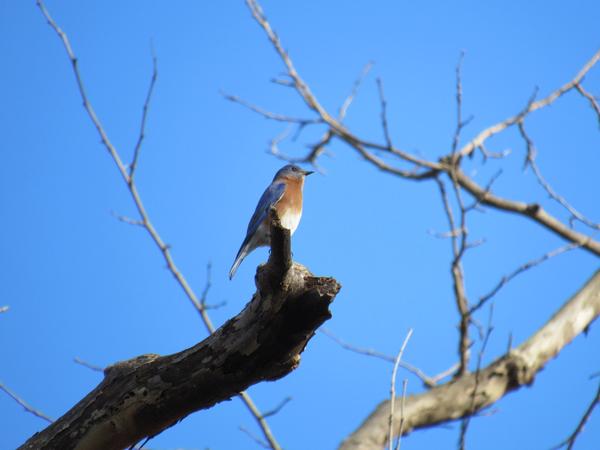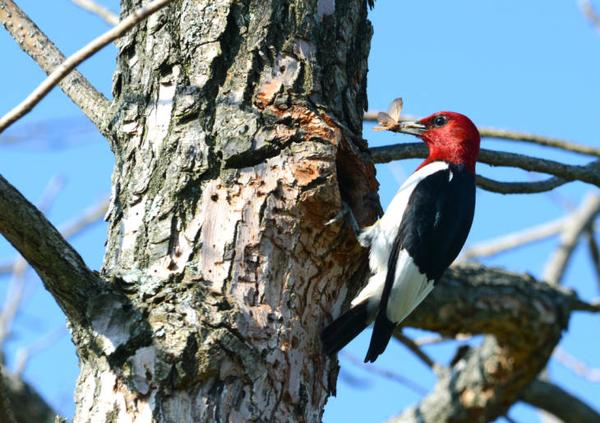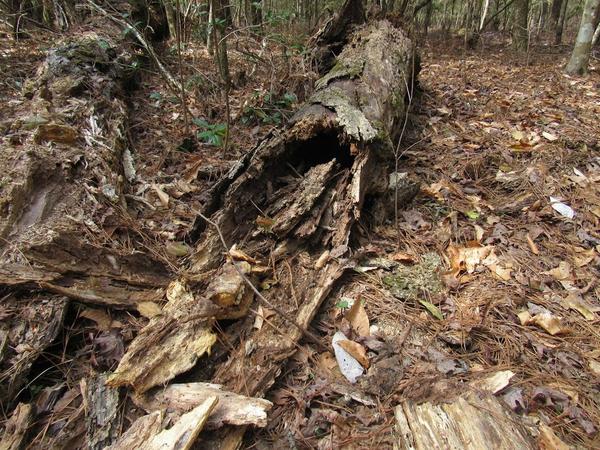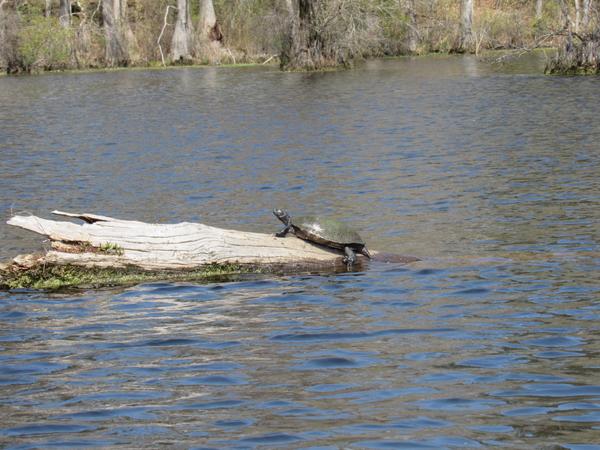Snags and Downed Logs
A snag is a standing dead or dying tree, with a diameter greater than 3 inches at breast height. A downed log is a log that is lying on or near the forest floor. Snags and downed logs are natural occurrences in forests. Trees can be killed by lightning, storm breakage, fire, disease, insects, or a variety of other factors.
Resource managers are aware of the value of snags and rotting, downed logs as an important component of habitat for many wildlife species. However, forest practices such as shorter rotations, firewood removal, timber stand improvement, and insect and disease control efforts can reduce the number of snags and downed logs available for wildlife. Hence, creating or protecting snags and downed logs is a simple, low-cost habitat improvement that has great benefits for a wide range of wildlife species.
Why Are Snags and Downed Logs Important?
Almost every part of a dead tree, at varying stages of decomposition, can be used by wildlife. A variety of wildlife use snags and downed logs for nesting, roosting, foraging, perching, or territorial displays. As the snag decays and the wood softens, woodpeckers (called primary cavity nesters) excavate cavities for nesting and roosting. Thereafter, many other animals (called secondary cavity users), including songbirds, owls, bats, raccoons and squirrels, use the cavities for nesting, roosting, or storing food supplies. Exposed high branches of snags are perfect for raptors to perch and watch for potential prey. Over 45 bird species and over 20 mammal species have been documented to use snags in the southeastern U.S. When a snag falls over it becomes a downed log, which provides cover and foraging areas for many reptiles, amphibians, small mammals, and invertebrates. Decaying logs attract insects, fungi, lichen, and moss, providing a food source for wildlife. As logs decay, they replenish soil nutrients and act as “nurse logs” for new tree seedlings to sprout. Over 20 bird species, over 50 mammal species, and many species of reptiles and amphibians use downed logs in the southeastern U.S.
|
A Sampling of Common Snag Users |
|
|
Red-bellied woodpecker |
Wood duck |
|
Pileated woodpecker |
Nuthatches |
|
Great crested flycatcher |
Barred owl |
|
Prothonotary warbler |
Screech owl |
|
Carolina chickadee |
Tufted titmouse |
|
Eastern bluebird |
Red-tailed hawk |
|
Gray squirrel |
Evening bat |
|
Southern flying squirrel |
Black bear |
|
Scarlet kingsnake |
Green anole |
|
A Sampling of Common Downed Log Users |
|
|
Birds |
|
|
Ruffed grouse |
|
|
Mammals |
|
|
Shrews |
Star-nosed mole |
|
Eastern chipmunk |
Deer mouse |
|
Black bear |
White-footed mouse |
|
Red-backed vole |
Gray fox |
|
Bobcat |
Long-tailed weasel |
|
Mink |
|
|
Amphibians / Reptiles |
|
|
Salamanders |
Eastern narrowmouth toad |
|
River cooter |
Southern toad |
|
Yellow-bellied slider |
Skinks |
|
Five-lined skink |
Ring-necked snake |
|
Eastern fence lizard |
Red-bellied snake |
A continuous supply of snags and downed logs must be maintained to sustain populations of animals that depend on these resources. It is important to provide snags of various sizes. Generally, large snags (>10 inches DBH) are more valuable than small snags because they can be used by a wider variety of species. Some species, such as black bears, require very large snags for denning. Small clumps of snags scattered over the landscape are generally best because they provide both nesting and foraging sites in one convenient location. A large group of snags usually is not used by more than one pair of the same species because of territorial behavior, and single snags scattered over the landscape may not provide sufficient nesting and foraging cover for individuals within a single territory.
Tips for Improving Snag and Downed Log Resources
Rotation
- Use longer timber rotations - >50 years in pines and >80 years in hardwoods to provide snags.
Regeneration
- Use shelterwood or seed tree methods, which retain overstory trees that may eventually become snags and downed logs.
- During regeneration cuts, leave existing snags and green (live) trees to provide future snags.
- Do not chop or burn logging slash during site preparation; the piles of slash make good cover for wildlife.
Intermediate treatments
- Retain snags and some low-value trees (e.g., undesirable species, poorly formed or hollow trees) during timber stand improvement operations; kill low-value trees and leave them standing rather than removing them.
- Rake around snags during prescribed burning to keep them from catching fire.
Direct improvements
- Erect nest boxes in areas where snag management is not feasible (see WWW #16 Building Songbird Boxes and WWW #17 Woodland Wildlife Nest Boxes).
- Create new snags in areas where there are few existing snags in one of the following ways:
- girdle selected trees with a hatchet, axe, or chainsaw
- cut the tops off large trees to create snags
- inject selected trees with herbicides labeled for that purpose
- Select a combination of hard (oaks, hickories, ash) and soft (maples, gums, poplars) trees for snags.
- Select snags of multiple size to provide cover/food for a variety of cavity users.
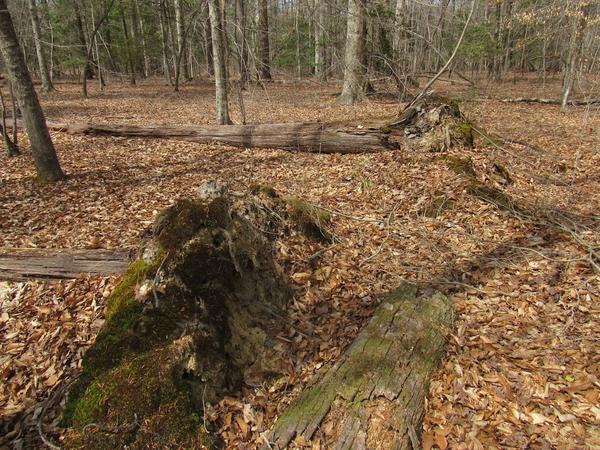
Forest logs or large downed woody debris makes excellent habitat and foraging grounds.
Liessa Bowen CC BY-NC 4.0
Working With Wildlife
North Carolina State University Extension - Forestry
Working With Wildlife Series
Publication date: March 1, 2019
Reviewed/Revised: May 28, 2024
N.C. Cooperative Extension prohibits discrimination and harassment regardless of age, color, disability, family and marital status, gender identity, national origin, political beliefs, race, religion, sex (including pregnancy), sexual orientation and veteran status.
N.C. Cooperative Extension prohibits discrimination and harassment regardless of age, color, disability, family and marital status, gender identity, national origin, political beliefs, race, religion, sex (including pregnancy), sexual orientation and veteran status.


